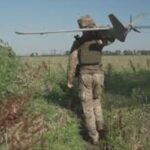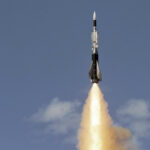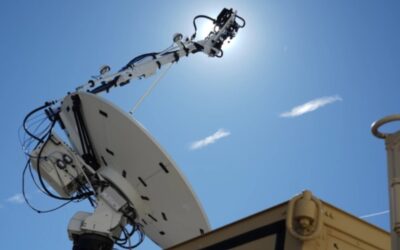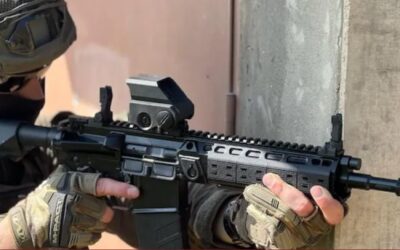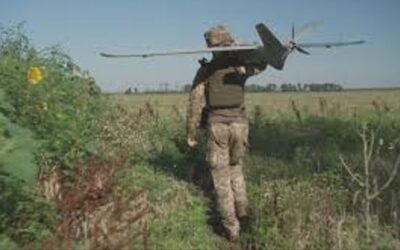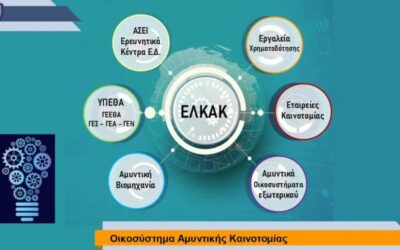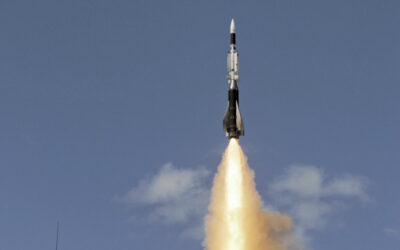The US Space Force has unveiled its new Remote Modular Terminal (RMT) weapon system. The system has completed its…
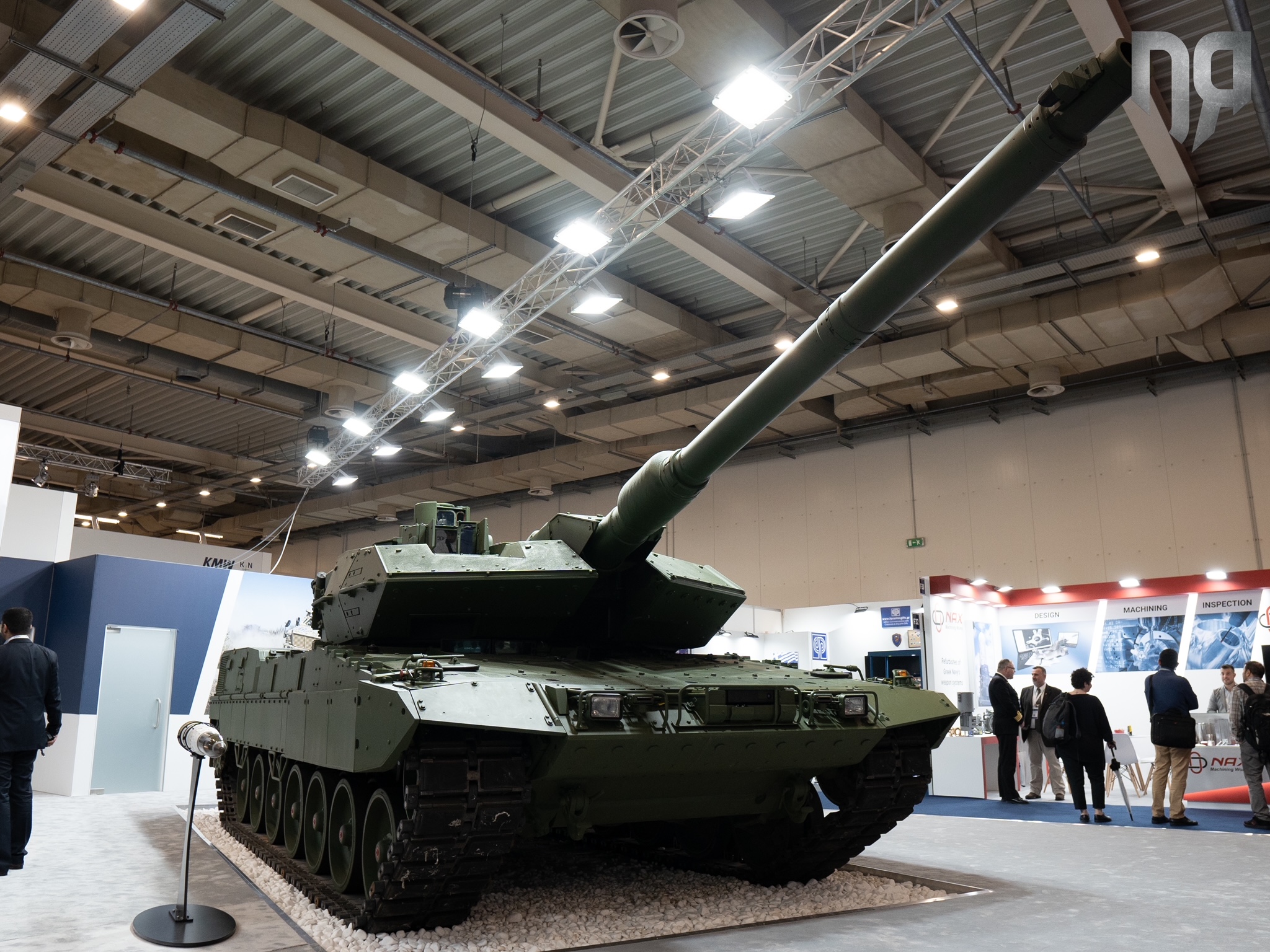
A demonstrator of the Leopard-2A7 was showcased at the booth of the German KMW – member of the KNDS group – at the international defence and security exhibition DEFEA 2023.
During our discussion with Mr. Axel Kempfle, Project Manager at KMW, we were informed that this technology demonstator is expected to increase both the degree of protection of the vehicle as well as the command and control systems.
The vehicle showcased by KMW is a “mixture” of various Leopard-2 versions, based on the Leopard-2A4, featuring an auxiliary power unit (APU) and a Leopard-2A6 turret (not in its standard version). The tank in question is used by KMW purely as a technology demonstrator and a test vehicle.
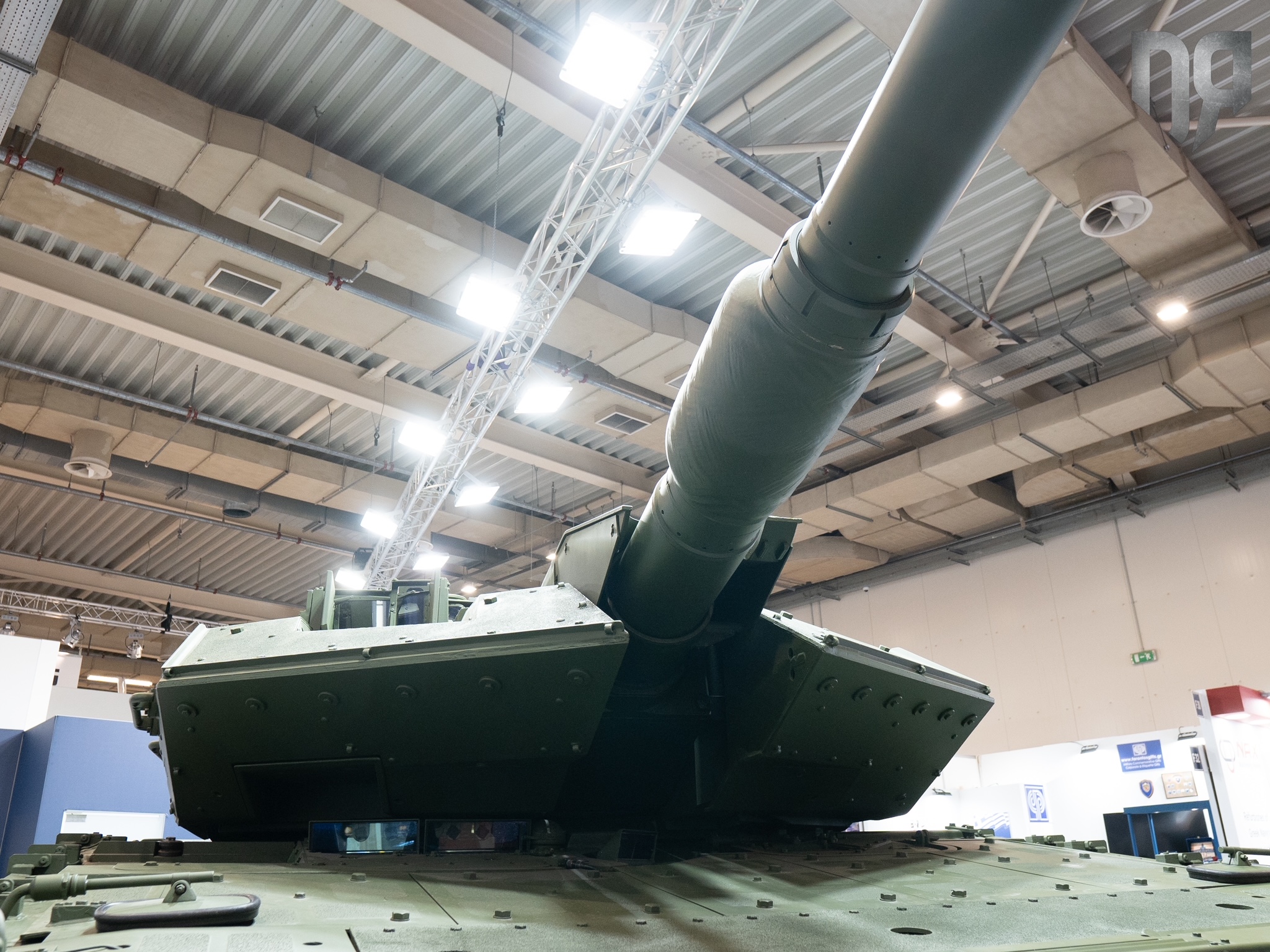
The periscope of the crew commander on the tank’s turret has been replaced with the PERI RTWL HENSOLDT, with Hunter-Killer capabilities. This periscope is also installed on the IFV PUMA and the Qatari and Hungarian versions of the Leopard-2A7+
This periscope will be the option for future Leopard versions. It is noted that the Greek Leopard 2A6 HELs also feature the Hunter-Killer capability, which enables the simultaneous engagement of two different targets by the crew commander and gunner.
In addition, KMW has created room for a second operator at the front of the vehicle, by installing a second hatch where the ammunition store was to be found. In this way, the vehicle can be a test for future versions with unmanned turrets.
Also read: DEFEA 2023 | The NIMROD 300 turret for the Leonidas 300 AIFV by EODH – VIDEO
Changes have also been made to the night vision systems, which only appeared at the front of the Leopard-2. In the demo configuration of the Leopard 2A7 showcased at DEFEA, however, KMW technicians installed the SPECTUS driver sight vision systems also from HENSOLDT (with front and rear cameras) which can fuse the images from a thermal and an infrared camera on a display at the driver’s seat, enabling the tank’s driving under any conditions. KMW has also installed additional infrared lumination on the sides of the tank, something which provides better situational awareness for the driver in adverse weather conditions.

In terms of protection, the demonstrator featured the Leopard-2A6 version armour with the additions found in the Greek version of the Leopard-2A6 HEL, that is, reinforced front armor and full roof armor. According to KMW, the improved armor package of the Leopard-2A6 HEL, will be the standard configuration of future versions, beyond the 2A7V, which entered service with the German Army (without the Greek Leopard armour configuration).
Additional armor kits can be fitted depending on the mission. Anti-fragment lining has been applied inside the tank which mitigates the losses from the fragments caused after an attack with anti-tank systems, something that is also found in older versions.
In addition, the demonstrator featured an improved auxiliary power unit (APU), which helps with heavy loads, while it is still powered by the 1500hp, 12-cylinder multi-fuel MTU engine and the RENK transmission system. The auxiliary power unit is configured for 69-ton vehicles so that users can install Active Protection Systems (APS), which consume large amounts of electrical power.
Also read: APS “Trophy” | The system that now makes Abrams “indestructible” – Photos & VIDEO
With the increase in weight, the people at KMW had to decide whether they preferred the increase in torque at top speed or at launch. KMW preferred to increase the speed of the vehicle at launch which, according to the company, shows 20% more efficiency. This will allow the vehicle to quickly exit from fortified or unfortified positions, but also greater agility on rugged terrain. The “price” of this change, however, is the small reduction in top speed, which dropped to 60 km from 65-66 km.

Additional changes include the installation of air conditioning at the rear of the turret, combined with the protection system against Nuclear, Biological and Chemical agents (NBC), with filters that are more resistant to dust, while an air conditioning system has been installed in the driver’s compartment as per the standards of the modifications made for the Qatari Leopard 2A7+. In terms of its other characteristics, the Leopard 2A7 is still capable of crossing a water obstacle (up to 4 meters using a snorkel), an obstacle 3 meters wide (e.g. an anti-tank ditch) and a vertical obstacle 1.05 meters high. The tank can move on terrain with a slope of up to 60% (longitudinal) and a side slope of up to 30%.
Regarding its armament, Rheinmetall’s newest gun, the 120 mm L/55 A1 (55 caliber) has been installed, which will be more efficient with the pressures of the new ammunition developed by the company for greater performance. Programmable munitions (AirBurst, Impact, Time-Delay) can also be mounted inside the turret, which is a key capability acquired from the German Army’s Leopard 2A7V program.
In addition, in the Qatari Leopard 2A7+ standards, it is possible to install a remote-controlled weapon station in collaboration with Kongsberg.
Battle management and telecommunications systems are also tailored according to client requirements.

Another minor on-board modification is the installment of a telephone at the rear of the vehicle for external communication between infantry units and the crew, something normally found in tanks of US and Israeli origin.
The demonstrator is obviously not for production; yet, in the future we might see the integration of some of its technologies based, among others, on some lessons learned from the use of Leopard tanks in Ukraine. An additional solution could also constitute the use of unmanned aerial vehicles (drones) for better tactical awareness.
READ MORE
ASCANIO | Made-in-Cyprus Mixed Reality training
https://defenceredefined.com.cy/ascanio-made-in-cyprus-mixed-reality-training/Technology is advancing at an accelerated pace and so do the training requirements of those holding high-risk positions.
IWI | Introduces Micro Folding Battle Sights to enhance Co-Witness capabilities
IWI (Israel Weapon Industries), a member of the SK Group, has unveiled its new Micro Folding Battle Sights (MFBS).
Hellenic Entrepreneurs Association | Ideas & Positions for the Promotion of Greek Entrepreneurship
The members of the Hellenic Entrepreneurs Association (E.E.N.E.) participated in a roundtable discussion entitled “Ideas, Positions…
Ukraine | Increase in defence spending by 367 million euros for the acquisition of drones
Kiev is increasing spending by 15.5 billion hryvnias (367 million euros) to bolster Ukraine’s armed forces with drones, according to…
HMoND | The legislative initiative for HCDI is under consultation
The legislative initiative of the Ministry of National Defence, under the title: “Establishment of the Hellenic Center for Defence…
Russia | Cluster bombs hit residential area in Odessa
Images from Russia’s strike in the heart of Odessa, which hit the so-called “Harry Potter Castle”, a former politician’s mansion now…
France | Industries prioritize orders of anti-aircraft missiles
The Armed Forces Ministry of France has instructed industries involved in the production of Aster anti-aircraft and anti-ballistic…
Ecuador | Appeals to International Court of Justice denouncing Mexico
Ecuadorian police stormed the Mexican embassy hours after the Mexican government granted former Vice President…









